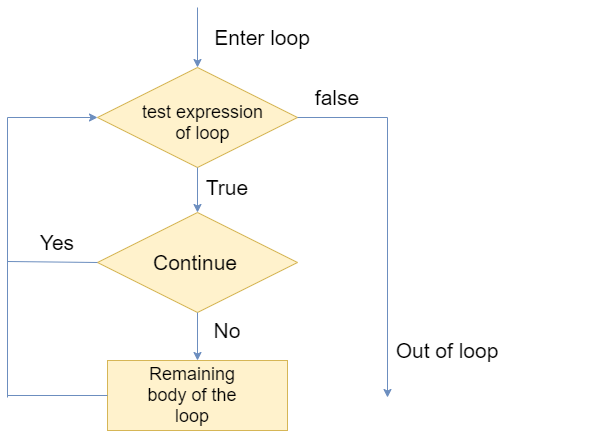Python continue Statement
The continue statement in Python is used to bring the program control to the beginning of the loop. The continue statement skips the remaining lines of code inside thstartse loop and start with the next iteration. It is mainly used for a particular condition inside the loop so that we can skip some specific code for a particular condition. The continue statement in Python is used to bring the program control to the beginning of the loop. The continue statement skips the remaining lines of code inside the loop and starts with the next iteration. It is mainly used for a particular condition inside the loop so that we can skip some specific code for a particular condition.
Syntax
Flow Diagram

Consider the following examples.
Example 1
Output:
1 2 3 4 6 7 8 9 10
Observe the output of the above code, the value 5 is skipped because we have provided the if condition using with continue statement in the while loop. When it matched with the given condition the control transferred to the beginning of the while loop and it skipped the value 5 from the code.
Let's have a look at another example:
Example 2
Output:
J a v a p o i n t
Pass Statement
The pass statement is a null operation since nothing happens when it is executed. It is used in the cases where a statement is syntactically needed but we don't want to use any executable statement at its place.
For example, it can be used while overriding a parent class method in the subclass but don't want to give its specific implementation in the subclass.
Pass is also used where the code will be written somewhere but not yet written in the program file. Consider the following example.
Example
Output:
Current element: 1 Current element: 2 Current element: 3 We are inside pass block Came out of pass Current element: 4 Current element: 5
We will learn more about the pass statement in the next tutorial.

0 comments:
Post a Comment
Thanks